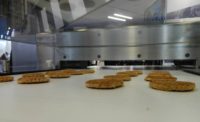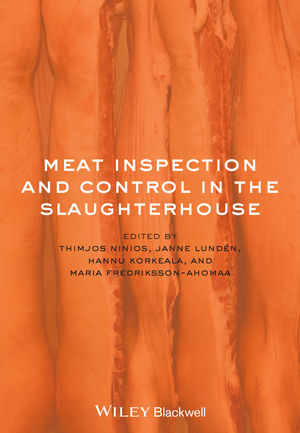Always known as an innovator in North America’s food inspection market, last year Fortress Technology unveiled yet another food safety first - a metal detector that inspects low profile, high value foods vertically and horizontally concurrently to achieve the highest sensitivity on the planet. Fortress President Steve Gidman explains why nothing else on the market comes close to the Interceptor DF (Divergent Field) when looking for thin, non-spherical metal contaminants in product and how the company set about developing this revolutionary new system.
Q: Tell how the idea for the Interceptor DF metal detector came about.
A: After speaking to several food manufacturers about their inspection processes, we discovered that many were experiencing some trouble detecting thin, flat metal flakes in their products. Certain upstream applications - for example, mixing, conching, rolling, scoring and molding - can lead to smaller flake and shaving-shaped metal contaminants which are impossible to find on conventional single-plane metal detectors.
We realized that adding a second electromagnetic field to work in the vertical plane could solve this problem. Therein lay the foundations for the Interceptor DF. Of course, this was no mean feat; the real complication was getting the two fields to cohabitate without compromising either’s performance. But we were able to engineer the right solution in the end.
Q: How does the Interceptor work and what makes it different from other inspection machinery?
A: Different to other multi-scan metal detectors on the market, the Interceptor DF can be customized to different aperture sizes and uses multiple coil sets to instantaneously drive the electromagnetic fields in different directions. Rather than missing a metal contaminant because it hasn’t aligned with a specific field, it looks for signals over a broad spectrum, from multiple angles.
The stronger disturbance from one field compensates for the weaker signal from another. This increases the probability of identifying and rejecting products containing non-spherical metals by over 100 percent. Although more expensive than a ‘regular’ food metal detector, it’s still only about 25 percent of the cost of a new X-ray system, yet performs better and is more reliable at picking out metal of all types and sizes.
Q: How does the machine improve usability?
A: One of the ways we ensured ease of use across mixed product lines was to build the Interceptor DF with the capability to learn and recall the signature of any given product with just one pass.
To increase supply chain transparency and product traceability, automatic product tracking and data capture software is included as standard. These electronic records can then be viewed, filtered and exported, and can supplement or replace manual documentation.
Q: What applications can the solution be used for?
A: As well as dry products, such as chocolate, confectionery, nutrition bars, cookies and biscuits, the Interceptor DF can also be used to inspect small thin packages of conductive products like cheese and deli-meats.
Already we have installed initial units and there are more in the pipeline. So far, the response has been great and we're expecting to expand on the Interceptor DF concept in the future to improve performance across additional applications.
For more information visit www.fortresstechnology.com





Report Abusive Comment